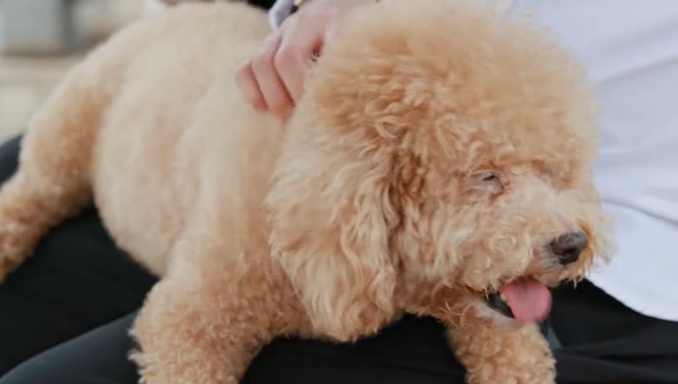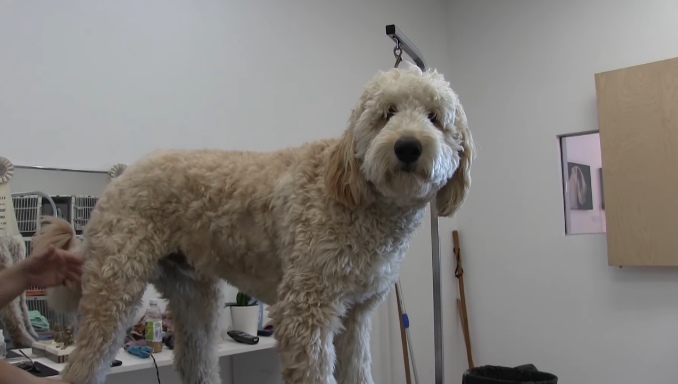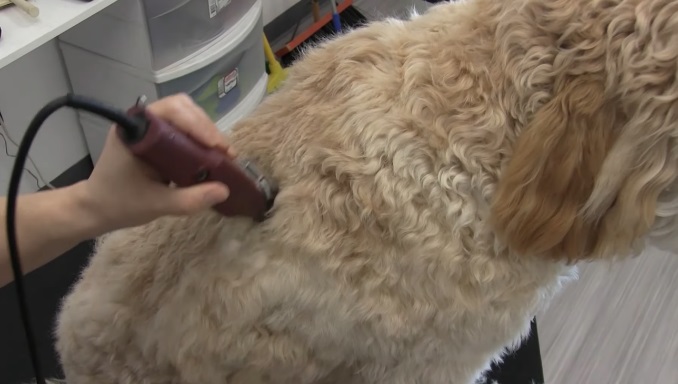Are Goldendoodles Hypoallergenic?
Are Goldendoodles Hypoallergenic? Goldendoodles are one of the most popular dog breeds in the world, and for good reason. They are friendly, intelligent, and make great pets. But one of the biggest questions people have about Goldendoodles is whether they are hypoallergenic. In this blog post, we will explore what makes Goldendoodles hypoallergenic and whether they are a good option for people with allergies. We will also provide some tips on how to care for a Goldendoodle if you have allergies. So if you’re curious about Goldendoodles, keep reading!
What Makes a Dog Hypoallergenic?
Before looking for an answer to Are Goldendoodles Hypoallergenic, let’s take a closer look to hypoallergnic dog. There are certain breeds of dogs that are known to be hypoallergenic, meaning they produce less of the protein that is responsible for triggering allergies in people. While no dog is truly 100% hypoallergenic, these breeds tend to be good choices for people with allergies. Some of the most popular hypoallergenic breeds include the Bichon Frise, Cocker Spaniel, and Poodle.
So what exactly makes a dog hypoallergenic? It all comes down to the proteins that are found in a dog’s saliva and skin. When a dog licks its fur, these proteins are transferred to the fur and can be inhaled by people, causing an allergic reaction. Similarly, when a person petting a dog comes into contact with the proteins on the dog’s skin, they can also have an allergic reaction.
Hypoallergenic dogs produce less of these proteins in their saliva and skin, which means they are less likely to trigger an allergic reaction in people.
If you’re considering getting a hypoallergenic dog, it’s important to remember that no dog is truly 100% hypoallergenic. Even the breeds that are known to be good for people with allergies can still cause an allergic reaction in some people. The best way to find out if you’re allergic to a particular breed of dog is to spend time around the breed before you commit to owning one. This will give you a chance to see if you have any reaction to the dog and will help you make an informed decision about whether or not a hypoallergenic dog is right for you.
So, what makes a dog hypoallergenic?
There is no definitive answer to this question, as each person’s allergies are unique. However, there are certain qualities that make some dogs better for people with allergies than others. For example, hypoallergenic dogs typically have fur that is less likely to shed and cause an allergic reaction. They may also have dander that is less irritating to the lungs and sinuses.
Do Goldendoodles Have These Qualities?
Are Yes, Goldendoodles typically have fur that is considered hypoallergenic. This is because they are a cross between a Golden Retriever and a Standard Poodle. Both of these breeds have fur that is less likely to shed and cause an allergic reaction. Goldendoodles also typically have dander that is less irritating to the lungs and sinuses.
However, it is important to note that no dog is 100% hypoallergenic. There is always a chance that you could have an allergic reaction to any dog, even a Goldendoodle. If you are allergic to dogs, it is important to consult with your doctor before getting one.
Are Goldendoodles Hypoallergenic?
Are Goldendoodles hypoallergenic? Yes, Goldendoodles are typically considered to be hypoallergenic. This is because they have fur that is less likely to shed and cause an allergic reaction. They also typically have dander that is less irritating to the lungs and sinuses. However, it is important to remember that no dog is 100% hypoallergenic. If you are allergic to dogs, it is important to consult with your doctor before getting one.
How to Care for a Goldendoodle If You Have Allergies
If you have allergies but still want to get a Goldendoodle, there are some things you can do to reduce your risk of an allergic reaction. For example, you can brush your dog regularly to remove loose hair and dander. You can also bathe your dog regularly to help reduce the amount of allergens on their fur.
You should also avoid letting your dog sleep in your bed or on furniture, as this can increase the risk of an allergic reaction. If you have severe allergies, you may want to consider getting an allergy shot before getting a Goldendoodle.
Allergies are no fun, but they don’t have to stop you from enjoying the companionship of a dog. If you have allergies and are considering getting a Goldendoodle, talk to your doctor and follow the tips above to help reduce your risk of an allergic reaction.
How to Reduce The Risk of Allergies From Goldendoodles
There are a few ways in which you can reduce the risk of allergies from Goldendoodles:
1. Brush your dog regularly to remove any loose hair and dander
Brushing your dog regularly is important for many reasons. It helps to remove any loose hair and dander, which can reduce the risk of allergies from Goldendoodles. It also helps to keep their coat looking clean and healthy. Brushing also helps to distribute natural oils throughout the coat, which can help to keep it looking shiny and healthy.
2. Bathe your dog regularly to help keep allergens at bay.
Goldendoodles are notorious for their shedding, and that means they can spread a lot of allergens around your home. Bathing your dog regularly can help to reduce the amount of allergens in your home, and it can also help to keep your dog’s coat clean and free of mats and tangles. Allergens can cause a lot of discomfort for people with allergies, so it’s important to do everything you can to reduce them. Bathing your dog is a great way to help keep allergens at bay.
3. Avoid letting your dog sleep on your bed or furniture if possible.
There are a few reasons why you should avoid letting your dog sleep on your bed or furniture. One reason is that it could increase the risk of allergies from Goldendoodles. Dogs can carry a lot of allergens on their fur, and when they sleep on your bed or furniture, those allergens can transfer to the fabric and cause you to have an allergic reaction. Another reason is that it can be disruptive to your sleep. If your dog is constantly getting up on your bed or furniture, it can make it difficult for you to get a good night’s sleep. Finally, it’s just not as clean. Your bed and furniture are likely to be much cleaner if your dog isn’t sleeping on them.
4. If you have severe allergies, consider getting an allergy shot before getting a Goldendoodle.
There are a few reasons why you should consider getting an allergy shot before getting a Goldendoodle. First, Goldendoodles can be a high-shedding breed, which means they can trigger allergies in people who are sensitive to pet dander. Getting an allergy shot beforehand can help reduce the risk of having an allergic reaction to your new dog.
Another reason to get an allergy shot is that Goldendoodles can be a high-maintenance breed when it comes to grooming. Their thick, curly coats require regular brushing and grooming to prevent mats and tangles from forming. If you’re allergic to dogs, this can be a difficult task. However, getting an allergy shot before you start grooming your Goldendoodle can help reduce the risk of having an allergic reaction to the dog’s fur.
Overall, getting an allergy shot before getting a Goldendoodle is a good idea for people who are allergic to dogs or who have sensitive skin. It can help reduce the risk of having an allergic reaction and make grooming easier.
Talk to your doctor if you have any concerns about allergies and Goldendoodles, and follow the tips above to help reduce your risk of an allergic reaction. Are Goldendoodles Hypoallergenic? You’re already know, let’s go to the next section!
Should People With Dog Allergies Risk Adopting A Dog?
There are a few things to consider before making the decision to adopt a dog if you have allergies. First, how severe are your allergies? If they are mild, you may be able to manage them with medication or by taking other precautions, such as avoiding contact with the dog’s fur. Secondly, what type of dog do you want to adopt? Some breeds are less likely to trigger allergies than others.
Finally, are you willing to put in the work to care for a dog with allergies? This includes regular grooming and cleaning, as well as making sure the dog takes any medication prescribed by a veterinarian. If you are willing to take these steps, then adopting a dog with allergies may be possible for you.
20 Helpful Tips For Controlling Pet Allergens
If you’re one of the millions of people who suffer from allergies, you know how difficult it can be to keep your symptoms under control. And if you have a pet, it can be even harder.
Here are 20 helpful tips for controlling pet allergens:
1. Keep your pet clean and well-groomed. Regular baths and brushing will help remove allergens from your pet’s fur.
2. Vacuum regularly. This will help remove pet dander and other allergens from your home.
3. Use an air purifier. An air purifier can help remove pet allergens from the air in your home.
4. Keep your pet out of your bedroom. If possible, keep your pet out of your bedroom to reduce the amount of allergens in that room.
5. Wash bedding and clothing frequently. Allergens can build up on bedding and clothing, so it’s important to wash them frequently.
6. Dust regularly. Dusting will help remove pet allergens from surfaces in your home.
7. Keep windows and doors closed. This will help keep pet allergens from coming into your home.
8. Avoid using carpeting. Carpeting can trap pet allergens, so it’s best to avoid it if possible.
9. Don’t allow your pet on furniture. Allowing your pet on furniture can spread allergens around your home.
10. Use allergen-proof covers for mattresses, pillows, and other bedding. These covers will help keep allergens from getting into your bedding.
11. Keep your pet out of the kitchen. The kitchen is where food is prepared, so it’s important to keep pet allergens out of that area.
12. Avoid using air fresheners. Air fresheners can contain chemicals that can trigger allergies.
13. Don’t smoke around your pet. Cigarette smoke can aggravate allergies and is harmful to your pet’s health.
14. Avoid using scented candles. Like air fresheners, scented candles can contain chemicals that can trigger allergies.
15. Don’t use perfumes or colognes around your pet. These can also contain allergens that can trigger a reaction.
16. Be aware of other animals in the area. If you’re allergic to one type of animal, you may be allergic to others.
17. Avoid petting zoos and other places where animals are present. These places can be full of allergens that can trigger a reaction.
18. Don’t let your pet lick your face. Pet saliva can contain allergens that can cause a reaction.
19. Keep your distance from other people’s pets. Even if you’re not allergic to a particular animal, you may be allergic to the allergens it carries.
20. Talk to your doctor about allergy shots. If you have severe allergies, your doctor may recommend allergy shots as a way to reduce your symptoms.
What Does a Goldendoodle Look Like?
Goldendoodles are a cross between a Golden Retriever and a Poodle. They are typically medium to large-sized dogs with a coat that is a mix of both the Golden Retriever’s and the Poodle’s. Goldendoodles can come in any color, but the most common colors are gold, cream, apricot, and red. They are typically intelligent, friendly, and good with children. Goldendoodles require regular grooming and exercise.
How Many Types Of Goldendoodles Are There?
Are Goldendoodles Hypoallergenic also depend on the types of goldendoodles. There are three types of Goldendoodles: Standard, Miniature, and Toy. Standard Goldendoodles weigh between 50 and 90 pounds, Miniature Goldendoodles weigh between 15 and 30 pounds, and Toy Goldendoodles weigh between 4 and 6 pounds. How many colors do they have? Goldendoodles can be any color, but the most common colors are black, brown, cream, red, and white.
Mini Goldendoodle:
The mini Goldendoodle is a cross between the golden retriever and the miniature poodle. They weigh between 15 and 30 pounds and are 19 to 20 inches tall.
Toy Goldendoodle:
The toy Goldendoodle is a cross between the golden retriever and the toy poodle. They weigh between 4 and 6 pounds and are 10 to 14 inches tall.
Standard goldendoodle:
The Standard Goldendoodle is a cross between the golden retriever and the standard poodle. They weigh between 50 and 90 pounds and are 21 to 26 inches tall.
The difference between each type
The difference between each type of Goldendoodle is their size. Standard Goldendoodles are the largest, followed by Miniature Goldendoodles, and then Toy Goldendoodles.
Which one should I choose?
The type of Goldendoodle you should choose depends on your preferences and lifestyle. If you want a large dog, then a Standard Goldendoodle is for you. If you want a smaller dog, then a Miniature or Toy Goldendoodle may be better suited for you.
Which Goldendoodles are most hypoallergenic?
There are a few different types of Goldendoodles that are known to be hypoallergenic. The most popular ones are the Standard Poodle, the Miniature Poodle, and the Toy Poodle. These types of Goldendoodles tend to have less dander and shed less than other dogs, making them ideal for people with allergies. Other hypoallergenic Goldendoodles include the Labradoodle, the Cockapoo, and the Maltipoo.
In general, if you’re looking for a Goldendoodle that is hypoallergenic, then you should look for an F1B, F1BB, F2B, F2BB, or multi-gen Goldendoodle as these dogs have the highest chance of being hypoallergenic.
Factors to consider when buying a Goldendoodles
When buying a Goldendoodle, there are a few things you should take into consideration:
- Size: Standard, Miniature, or Toy?
- Coat type: Long or short?
- Color: What color do you want?
- Temperament: Do you want a calm dog or an energetic one?
- Allergies: If you’re allergic to dogs, make sure to choose a hypoallergenic breed.
Once you’ve decided on these factors, you can start looking for Goldendoodles that fit your criteria. You can find Goldendoodles for sale from breeders or online retailers.
When choosing a breeder, make sure to do your research to find a reputable one. You can also ask your veterinarian for recommendations. Once you’ve found a few breeders, you can visit their facilities and meet the puppies in person. This will help you decide which Goldendoodle is right for you.
When choosing an online retailer, make sure to read reviews before making a purchase. You should also make sure that the retailer is a reputable one. Once you’ve found a few retailers, you can compare prices and find the best deal.
Goldendoodles are a great addition to any family. They’re loving, loyal, and perfect for people of all ages. If you’re looking for a new furry friend, then a Goldendoodle may be the perfect choice for you.
Do Goldendoodles Shed Or Smell?
Goldendoodles are relatively low-shedding and have little to no doggy odor, making them ideal for people with allergies or who are looking for a hypoallergenic pet. While all dogs shed some hair, Goldendoodles tend to lose less than other breeds. This is due in part to their Poodle parentage, as Poodles do not shed much. However, it is also important to note that the amount a Goldendoodle sheds can depend on the coat type and individual dog.
For example, F1b Goldendoodles (those with a higher percentage of Poodle in their lineage) typically shed less than F1 Goldendoodles (those with a 50/50 mix of Golden Retriever and Poodle). Additionally, those with a wavy or curly coat typically shed less than those with a straight coat. Regular brushing can help to minimize shedding and keep your Goldendoodle’s coat looking its best.
How Much Do Goldendoodles Cost?
The cost of a Goldendoodle can vary depending on the breeder, the size of the dog, and the coat type. In general, Miniature and Toy Goldendoodles tend to be less expensive than Standard Goldendoodles. Additionally, those with a straight coat may be less expensive than those with a wavy or curly coat.
Generally, you can expect to pay anywhere from $600 to $3000 for a Goldendoodle. However, some breeders may charge more or less depending on the factors mentioned above. Be sure to do your research and compare prices before making a purchase.
How Much Exercise Does A Goldendoodle Need?
Goldendoodles are an active breed and need plenty of exercise to stay healthy and happy. A good rule of thumb is to give your Goldendoodle at least 30 minutes of exercise per day. This can be in the form of walks, runs, hikes, or playtime in the yard. If you have a particularly active dog, you may need to increase their exercise time. Conversely, if your dog is older or has health issues, you may need to decrease their exercise time. Always consult with your veterinarian before making any changes to your dog’s exercise routine.
Goldendoodles are a great breed for active families or those who enjoy spending time outdoors. If you’re looking for a dog that will keep you active, then a Goldendoodle is a perfect choice.
Do Goldendoodles Bark A Lot?
Goldendoodles typically bark less than other breeds, making them ideal for those who live in close quarters or who don’t want a dog that barks excessively. However, all dogs bark at some point, and Goldendoodles are no exception. If you’re concerned about your dog’s barking, you can talk to your veterinarian or a trainer about ways to help reduce it.
Do Goldendoodles have health problems?
Like all dog breeds, Goldendoodles can be susceptible to certain health problems. However, there are some health conditions that are more common in Goldendoodles than other dogs. These include hip dysplasia, von Willebrand’s disease, and Addison’s disease.
To help your Goldendoodle stay healthy, be sure to take him or her to the vet for regular check-ups. Also, make sure you are aware of the signs and symptoms of common Goldendoodle health problems so you can catch them early and get treatment if necessary.
Where can I buy a Goldendoodle?
Goldendoodles can be purchased from a variety of places, including pet stores, online retailers, and breeders.
When choosing where to buy your Goldendoodle, it’s important to do your research and make sure you’re getting a healthy, well-bred pup. Be wary of buying a dog from a pet store, as these dogs often come from puppy mills and may have health and behavior problems.
It’s also a good idea to visit the breeder’s facility in person to meet the parents of the puppy and see the conditions in which the dogs are being raised. This will give you a good idea of what to expect when you bring your new Goldendoodle pup home.
How to Groom A Goldendoodle
Goldendoodles require regular grooming to keep their coat looking its best. Depending on the type of coat your dog has, this may include brushing, bathing, and trimming.
Those with a wavy or curly coat will need to be brushed more often than those with a straight coat. It’s also important to avoid shaving Goldendoodles, as this can damage their coat.
When bathing your Goldendoodle, be sure to use a mild shampoo that is designed for dogs. Never use human shampoo on your dog, as it can be harsh and irritate their skin.
After bathing, be sure to thoroughly dry your Goldendoodle’s coat to prevent mats and tangles. You may also need to trim your dog’s nails on a regular basis.
If you’re not comfortable grooming your Goldendoodle yourself, you can always take them to a professional groomer. Just be sure to find a groomer who is experienced with Goldendoodles and their coat type.
Goldendoodle How To Train
Goldendoodles are intelligent, eager to please dogs that can be easy to train. However, like all dogs, they will need patience and consistency from their owner.
The best way to train your Goldendoodle is with positive reinforcement methods such as treats and praise. Avoid using negative reinforcement, such as scolding or hitting, as this will only serve to make your dog fearful and less likely to obey.
Start training your Goldendoodle as early as possible, and be sure to make it fun for both you and your dog. With patience and consistency, you’ll be able to teach your Goldendoodle basic obedience commands and tricks in no time.
10 Tips to Train Your Goldendoodle
1. Start training early. The sooner you start, the better.
2. Be consistent with your commands. Dogs respond best to consistency.
3. Use positive reinforcement methods such as treats and praise.
4. Avoid using negative reinforcement such as scolding or hitting.
5. Make training fun for both you and your dog.
6. Be patient. Training takes time and patience.
7. Reward your dog for good behavior.
8. Use short, frequent training sessions.
9. End each session on a positive note.
10. Have realistic expectations. Training takes time, patience, and consistency.
By following these tips, you’ll be well on your way to training your Goldendoodle in no time. Just remember to be patient, consistent, and have fun with it!
FAQs of Are Goldendoodles Hypoallergenic
What does F1B mean for Goldendoodles?
F1B Goldendoodles are a cross between an F1 Goldendoodle and a Standard Poodle. The resulting puppies have a higher percentage of poodle in their lineage, which means they are likely to inherit more of the hypoallergenic properties of the poodle breed.
These dogs are often sought after by families who have allergies but still want to enjoy the company of a furry friend. F1B Goldendoodles are also known for being highly intelligent and easily trainable, making them ideal pets for families with children.
If you’re considering adding an F1B Goldendoodle to your family, be sure to do your research and find a reputable breeder. This will help ensure that you end up with a healthy, happy puppy that is a great fit for your home.
What is a F1 Goldendoodle?
An F1 Goldendoodle is an amazing, family-friendly dog that is a cross between a Golden Retriever and a Standard Poodle. They typically have all the best qualities of both breeds, including being intelligent, friendly, and social. Goldendoodles are also very low-shedding, making them a great choice for people with allergies. If you’re looking for a fun-loving, intelligent, and loyal companion, a F1 Goldendoodle might be the perfect dog for you!
The difference between the 2 types
The first generation, F1, is half of each purebred for coats with a nice plush to loose waves and little to non-shed. The F1B Goldendoodle is 75% Poodle and 25% Golden Retriever because they are the backcross of an F1 Goldendoodle and a purebred Poodle, resulting in the most allergy-friendly and curliest coat.
What type of Goldendoodle is best for allergies?
Depending on the specific allergies someone has, there is no single “best” Goldendoodle for allergies. However, F1B Goldendoodles are considered to be particularly hypoallergenic due to their higher percentage of Poodle and lesser percentage of Golden Retriever in their genetic makeup.
The hypoallergenic aspects of F1B Goldendoodles come from the presence of more tightly curled fur and an undercoat that is less prone to shedding. This combination helps reduce allergens in the home environment, making them a great choice for people with allergies. Additionally, since F1Bs have a higher percentage of Poodle than other types of Goldendoodles, they tend to produce less dander than other Goldendoodles, making them even more suitable for people with allergies.
What to know about Goldendoodles
Goldendoodles are a hybrid between a Golden Retriever and a Poodle. They were first bred in the United States in the 1990s, and since then, they have become one of the most popular dog breeds. Goldendoodles are known for their friendly and loving nature, as well as their intelligence and trainability.
Goldendoodles come in three different sizes: Standard, Miniature, and Toy. Standard Goldendoodles weigh between 50 and 90 pounds, while Miniature Goldendoodles weigh between 15 and 30 pounds. Toy Goldendoodles are the smallest of the three, weighing in at 10 pounds or less.
All Goldendoodles require regular grooming, as their coat can become matted if not brushed regularly. Goldendoodles also need to be exercised daily to prevent them from becoming overweight.
If you are thinking about adding a Goldendoodle to your family, be sure to do your research and find a reputable breeder. And remember, every dog is unique, so don’t expect your Goldendoodle to be exactly like the one next door!
Do Mini Goldendoodles shed?
Goldendoodles are a mix of two great shedding breeds, the Golden Retriever and the Poodle. But because they are a mix, they can inherit the best (and worst) traits from both parents. So, do Mini Goldendoodles shed?
The answer is… it depends! Some Mini Goldendoodles definitely shed more than others. But even the ones that don’t shed much will still lose some hair. And when they do shed, it can be quite a lot!
So if you’re looking for a dog that doesn’t shed at all, a Mini Goldendoodle is probably not the right breed for you. But if you can handle a little bit of shedding, then a Mini Goldendoodle might be the perfect dog for you!
How much do Mini Goldendoodles cost?
Mini Goldendoodles usually cost between $1,500 and $2,500. The exact price will depend on the breeder, the size of the dog, and other factors.
When you’re looking for a Mini Goldendoodle, be sure to find a reputable breeder who can provide you with all the information you need about the dog. This will help you make sure that you’re getting a healthy, happy pup that is a great fit for your family.
How much to feed a Goldendoodle puppy?
How much to feed a Goldendoodle puppy? This is a common question that new dog owners have. The answer will depend on a few factors, including the age and size of your puppy, as well as his or her activity level. A good rule of thumb is to start with 1/2 cup of food per day and then adjust based on your puppy’s needs. If you are unsure how much to feed your Goldendoodle puppy, talk to your veterinarian for guidance.
Do Goldendoodles like water?
Some Goldendoodles may enjoy swimming and playing in water, while others may not be as fond of it. It really varies from dog to dog. You’ll just have to see what your individual Goldendoodle’s preferences are. If he or she does seem to like water, make sure you take proper precautions to keep your dog safe while swimming, such as using a life jacket and never leaving him or her unattended.
How old do Goldendoodles live?
The average lifespan of a Goldendoodle is 10-12 years. However, some individual dogs may live longer or shorter depending on their health and genetics.
To help your Goldendoodle live a long and healthy life, be sure to provide him or her with good nutrition, plenty of exercise, and regular vet check-ups. Also, make sure you socialize your Goldendoodle from an early age so he or she knows how to interact properly with other dogs and people.
Do Goldendoodles like to cuddle?
Many Goldendoodles enjoy cuddling and being close to their owners. This breed is typically very affectionate and loving, and they make great companions. If you’re looking for a dog that will want to snuggle with you, then a Goldendoodle is a good choice. However, every dog is different, so there are no guarantees. You’ll just have to get to know your Goldendoodle and see what his or her preferences are.
Conclusion
Goldendoodles are becoming a more popular breed of dog, and many people are wondering if they are hypoallergenic. The answer is not quite so simple. While Goldendoodles tend to be less allergenic than other breeds, there is no guarantee that any particular dog will not cause an allergic reaction in someone who is sensitive to dogs.
Goldendoodles are a great breed of dog for many families. They are typically very loving and affectionate, and they make great companions. They are also relatively easy to train, and they don’t require a lot of exercise. However, Goldendoodles do shed, so if you’re looking for a dog that doesn’t shed at all, this may not be the breed for you. But if you can handle a little bit of shedding, then a Goldendoodle might be the perfect dog for you!
Above is the article “Are Goldendoodles Hypoallergenic?”. Thanks for reading!














